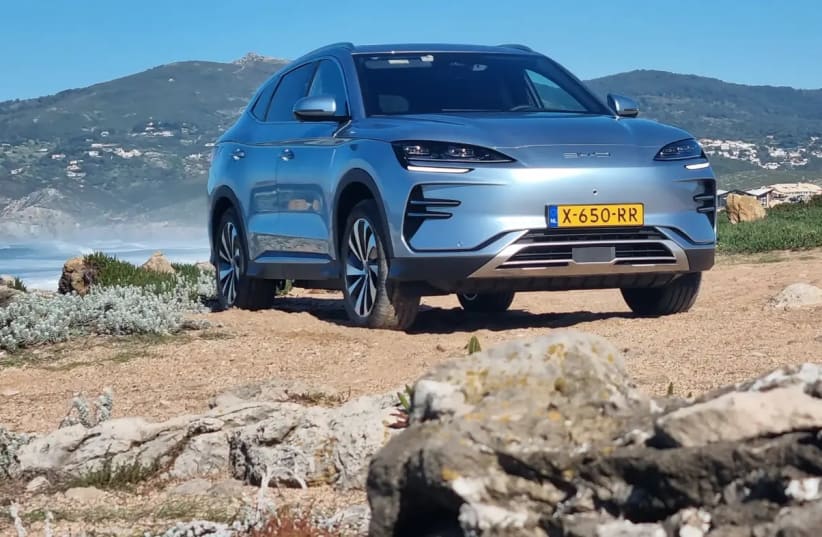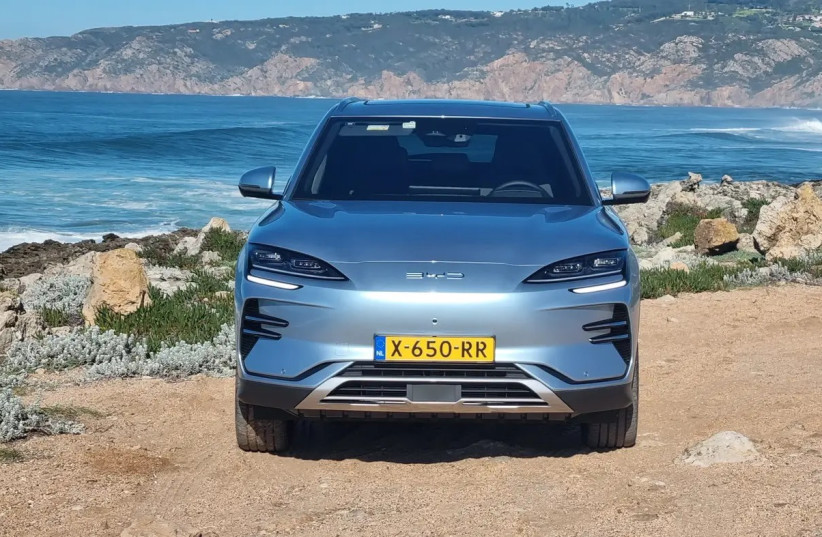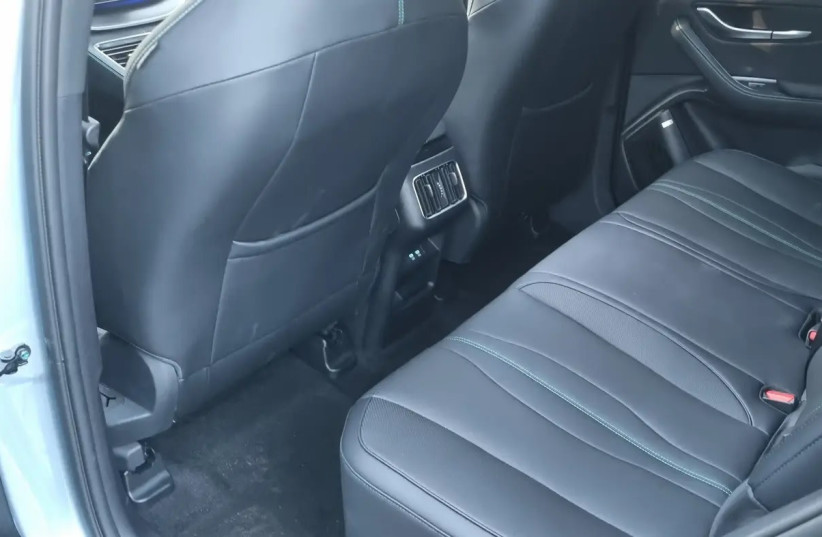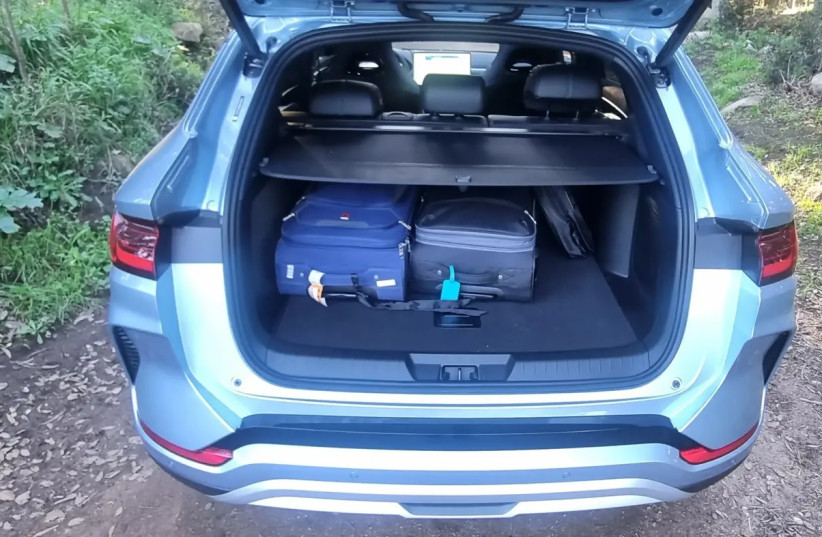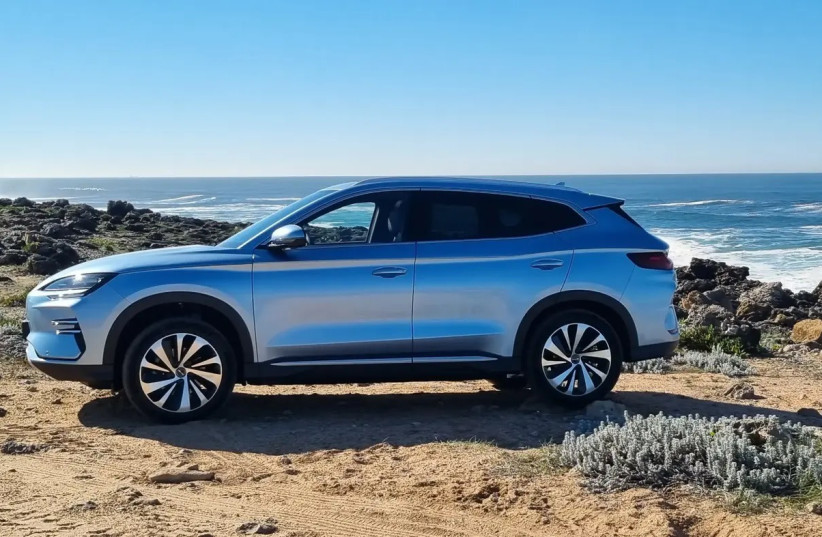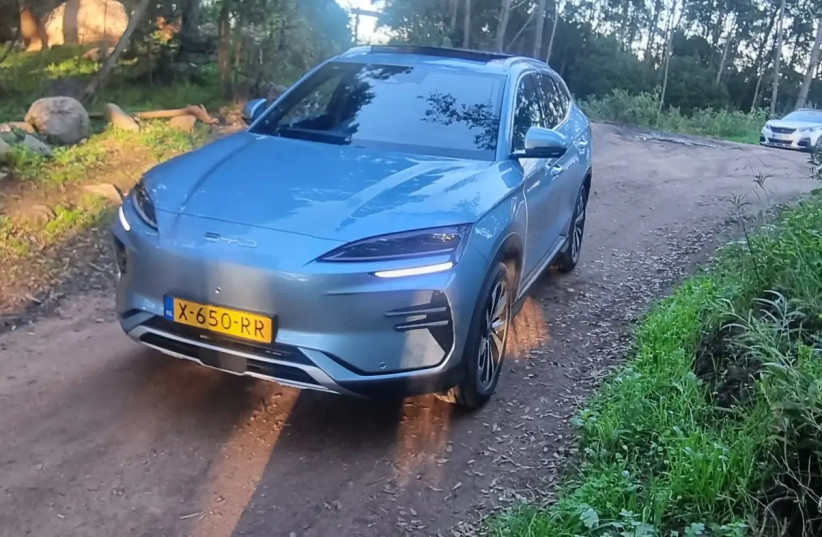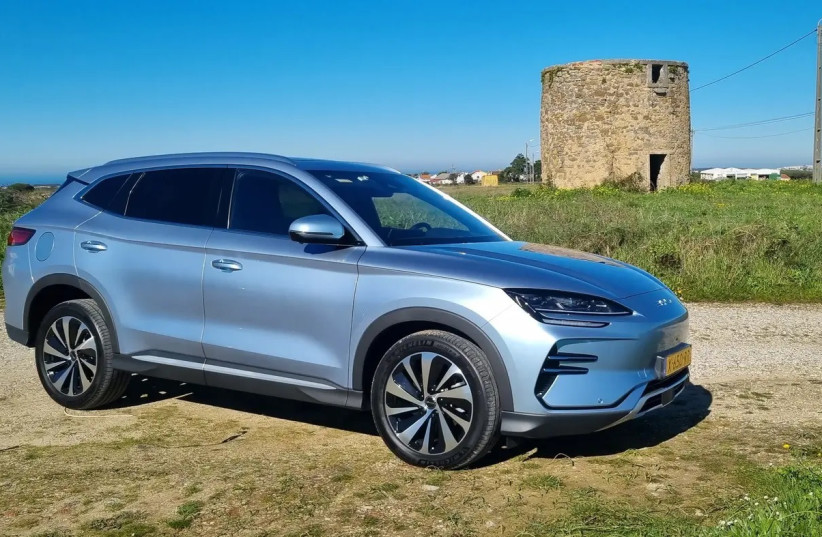Estimated price: NIS 200,000Competitors: Tesla Model Y, Hyundai Ioniq 5, Skoda EnyaqWe liked: Solid and sophisticated, spacious and well-equipped, practical and comfortable and probably cheaper than competitorsWe didn't like: Performance and charging speedRating: 8/10
In the electric market, there is still a large gap in price and dimensions between the popular e3 (currently NIS 176,000 for the equipped model) and the Tesla Model Y and the array of crossovers born from it, like Hyundai Ioniq 5, Skoda Enyaq, and more, which start from NIS 215,000 even before the recent increase in purchase tax in their price lists.
This gap will be filled around June-July by a new-old model from BYD, the Syl U. In China, it has been sold since 2019 under the name Song Plus, and now its European version is being introduced under the name Syl U. We already met it briefly in China for a first impression, now the final version is coming, which even after the increase in the purchase tax on electric vehicles is expected to cost around NIS 200,000. Is it worth the wait?
Design: In one word, solid. This is a relatively large crossover, with a length of 4.78 meters, a width of 1.89 meters, a height of 1.67 meters, and a wheelbase of 2.76 meters. It is 33 cm longer, 1.5 cm wider, and 6.5 cm higher than the e3, and its wheelbase is 4 cm longer. More significantly, the cargo space, with a volume of 552 liters, is 110 liters larger than that of the e3.
Despite the use of the name Sil, it has no connection to the Syl Sudan that will be launched here next week, based on a new and more advanced platform, which was launched last year. BYD personnel claimed to us that the European version received the new platform, but it is an expensive and unacceptable analysis, worth developing a model from scratch. We attribute the claim to a translation error, and that some components of the new platform were integrated into the old model, but the battery integration as part of the vehicle structure for the improvement of rigidity, for example, the high dynamic capabilities demonstrated by the Sudan and its rear-wheel drive are not present. BYD has also already revealed a more expensive and designed crossover, called the Song L in China and truly based on the Syl Sudan platform, which will arrive in Europe and with us next year under the name Sil Y.
Passenger cabin: The driver's environment will be familiar to anyone who has sat in an Atto 3, with the same large central rotating screen (12.8 inches in the Comfort base version, 15.6 inches in the equipped design, but without the interesting but unnecessary design elements, like guitar frets on doors. There is also a 12.3-inch screen for the driver.
The high seating, excellent outward visibility, and as usual, the operation of the systems is done from the screen. Despite shortcut screens, including climate control, operation is still cumbersome, especially for a seasoned driver transitioning to an electric vehicle, although preferable to that of the Y model.
The spaciousness in the front and rear is excellent, with the main improvement compared to the E-Two 3 being felt in the rear seat. With generous knee room, headroom, and width. Only the middle passenger will suffer as expected from a slightly narrower seat and the protruding center console. The cargo compartment is larger than usual among Chinese crossovers.
Equipment: Generous. Even the basic comfort comes with both large screens and integration for Android Auto and Apple CarPlay, a panoramic roof with an electric shade, split climate control with rear seat outlets, 19-inch wheels, leather-like upholstery for the seats, parking sensors, and 360-degree cameras for parking. The well-equipped design adds wireless charging for two smartphones, a head-up display for the driver, and an enhanced stereo system.
Safety: Last year, the Sil U received 5 out of 5 stars in the European crash test. The specification includes most commonly accepted active safety systems.
Performance: There is only one engine option, with 218 horsepower and front-wheel drive, and two batteries of 71.8 kWh in the base version and 87 kWh in the fully equipped version that we drove.
What is unusual is the performance. This is a 2-ton vehicle with good but less powerful acceleration than is common today with electric vehicles. An official 0-100 km/h time of 9.3-9.6 seconds means the Sil U is slower even than the smaller and significantly cheaper BYD Dolphin. Is this a significant disadvantage? In practice, there is no issue being first at the stoplight and overtaking almost anywhere allowed. But you don't get the punch in the back and the exhilarating view you'd get in many other electric vehicles.
Since the launch of the Tesla Model 3, there is a feeling that if an electric car does not go from 0-100 km/h in 6 seconds, it is too slow. These are indeed very nice performances, but they are one of the reasons for the high accident rate of electric cars in Israel and worldwide, as well as the high insurance prices. If those of the BYD Silk U were cheaper than usual, it would have been worth it.
Range and charging: The manufacturer claims a range of 500 km in the expensive version with the large battery, but during our test drive, which was faster than usual, we reached a range of about 450 km. There is no option for true driving in one tank with most returning charging, which would have added to the driving range. Fast charging at a rate of 140 kW is relatively slow compared to Tesla and Hyundai, which requires you to spend an additional 15 minutes standing during charging from 20% to 80%. The base model is even slower in fast charging, up to 115 kW. In both cases, they will charge in 11 hours.
Comfort and behavior: Driving the Silk is generally very quiet. The tuning of the suspension is a bit rigid for the sake of driving comfort, which turns out to be good, at the expense of road behavior. The feeling is a bit stifled in corners, but still reasonable, especially when driving at a family pace.
Bottom line: Like in the old McDonald's commercial, BYD has increased the motor portion here, but at a price that will be closer to NIS 19,000 than NIS 90,000. The Silk Y is a large, spacious, practical, equipped, and comfortable family car. It is not as high-tech as the Model Y, more straightforward to operate than a Skoda Enyaq. But if its price predictions come true, it will be tens of thousands of shekels cheaper than the group's flagship product, a good answer to this year's electric car inflation, balancing the less speedy performances and general lack of uniqueness, and providing fair value for money.
The writer was a BYD guest in Portugal
Technical Details: BYD SILENT UEngine: Electric, 218 hp, 33 kg/kmGearbox: Auto, direct drive. Front-wheel driveBattery: 87 kWhMaximum fast charging speed: 140 kW
Dimensions:Length (m): 4.785Width (m): 1.89Height (m): 1.67Wheelbase (m): 2.76Cargo space: 552 litersWeight: 2,020 kg
Performance (manufacturer):0-100 km/h (seconds): 9.6Top speed (km/h): 175 km/hCombined range: 500 kmTest range: 450 km
Safety:European crash test: 5 out of 5 stars (as of 2023)Active safety: Autonomous emergency braking in forward and reverse driving, adaptive cruise control, lane-keeping assist, off-road vehicle warning, automatic high beams
Warranty:6 years or 150,000 km for the vehicle, 8 years or 200,000 km for the battery
